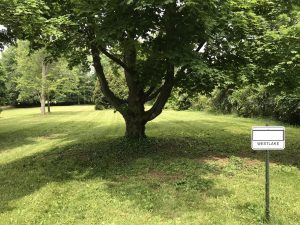What to Look for When Buying a Lot to Build a Home
0 Comments | Posted by armchairbuilder in Build Your Own Home

Important Items to Review Before Purchase
We’ve recently purchased the lot for our new Open Book Build project in Westlake, Ohio. In doing so, we carefully reviewed an important list of items to make certain we would have a smooth building experience. Here are the major items we reviewed prior to purchase that should prevent us from having any major roadblocks during the building process. Some of these items were taken directly from the Armchair Builder Lot Purchase Guide available at our E-store.
Location
I’m sure you’ve heard the old saying the most important three things to consider when purchasing real estate is location, location, location. Yes, it’s a cliche that’s really overdone. However, it does have some serious merit. Most buyers have specific things they look for when choosing a location to live. These include quality of schools, proximity to business centers/jobs, real estate taxes, proximity to airports, highways and trains, and municipal services including pools, gyms, parks…etc. So, even if these things aren’t of interest to you now, they will be when you finally sell this home in the future and will affect resale value. In other words, you may not have a child so schools aren’t important to you…but the future buyer of your home might.
Municipal/HOA Requirements
Most cities, villages, or townships have a set of requirements you must follow when building a home within their community. In addition to these, many subdivisions/communities have homeowner’s associations (i.e. HOA’s) that have their own set of rules. So, it’s important to find out what these are prior to making a lot purchase to make certain that the home you want to build will be allowed per the local jurisdictional requirements. For example, our new project involves building an entry level home that is affordable which requires us to keep the square footage down for the initial build out of the home. Of the three municipalities we reviewed for building, the minimum square footage requirements for homes were 1100, 1300, and 1500. So if you were building a tiny home, these communities wouldn’t work for you. Here are a few of the requirements that cities or homeowner’s associations might have that restrict building:
- minimum square footage: (these sometimes include garage space as well so ask a lot of questions before making any assumptions)
- architectural requirements: cladding types (example – some communities don’t allow vinyl siding), architectural style, roof types…etc.
- building envelope: Each community requires minimum front, side and rear yard setbacks from property lines to keep a uniform appearance to the community…review these to make sure your house plan will fit.
- Zoning: Make certain the lot you are buying is zoned for residential. If the realtor tells you the zoning is commercial or industrial…it’s probably best to pass. That’s not to say you couldn’t get a variance or ask to have the parcel rezoned as this is sometimes possible. However, it can be expensive and time consuming. Plus, you don’t want your beautiful new home to be located next to a manufacturing plant or a warehouse in most cases.
- Fees: Check with the local building and engineering departments to see what the fee structure is for building. Typical fees can include permits, plan review, utility connections, impact fees (can be tens of thousands of dollars), and so on.
- Sidewalks: It’s important to ask the engineering and building department what the requirements are for public sidewalks. These are typically paid for and installed by the person/entity building the home. It’s important to know how wide they are and where they are required to be installed. We looked at a couple of large corner lots for example that required public walks on both sides of the house which would have cost $3000-$4000 to install. This will impact your budget in a big way so make sure you know the requirements.

Prep Costs
It’s important to look at the costs associated with prepping the building lot to get it ready for construction. One of the items to consider is tree clearing. The lot will need to be cleared of trees and vegetation not only in the location of the home but also with a minimum 25 feet buffer around the perimeter. This will allow for proper grading and drainage of the lot. Tree cutting, tree debris removal and stump grinding can get expensive so it’s important to take this cost into consideration when evaluating lots. And if the lot is located next to existing homes, it may require special equipment to take trees down to avoid damaging adjacent homes. The lot we ended up purchasing for the Open Book Build had already been cleared so we knew that cost was already covered.
Utilities are another important item to review prior to purchasing a building lot. Electric, water, sewer, gas, and cable are important items to consider. If any of these are missing, you will need to come up with alternatives. A call to the local utility company will give an indication of the cost for extending electric, gas or cable to the site. If a well or septic needs to be installed you are looking at $10k-$15k in extra costs. This is why we chose a lot with all utilities already present for our new project.
It’s also important to consider dirt balance on the project. If you are installing a basement for the site, a volume of dirt will be coming out of the excavation that will need a place to go. If you have a significant amount of dirt to re-spread, it’s important to have enough area on the lot to accommodate the dirt. If not, the extra material will need to be hauled off site. On the other hand, if the lot is low, it may be necessary to add fill dirt. This will require some effort to find a offsite location to get the dirt from. Keep in mind, hauling dirt in or out can be a VERY expensive task that doesn’t add value to the new home.
A few other items to consider include subsurface conditions (i.e. rock), holding costs (if any time passes from the time the lot is purchase to the time of build), and road tie-in costs. Feel free to check out our video of the Armchair Builder Lot Purchase Guide if you want a specific resource for finding the lot for your new dream home.

